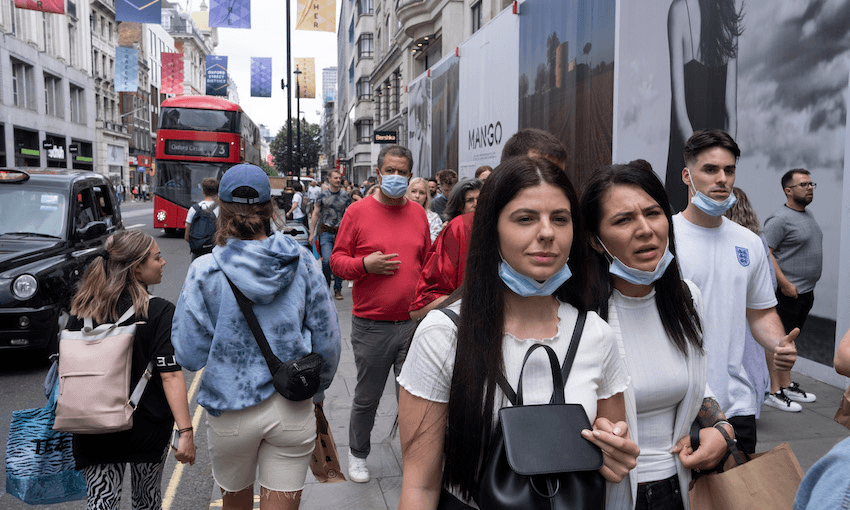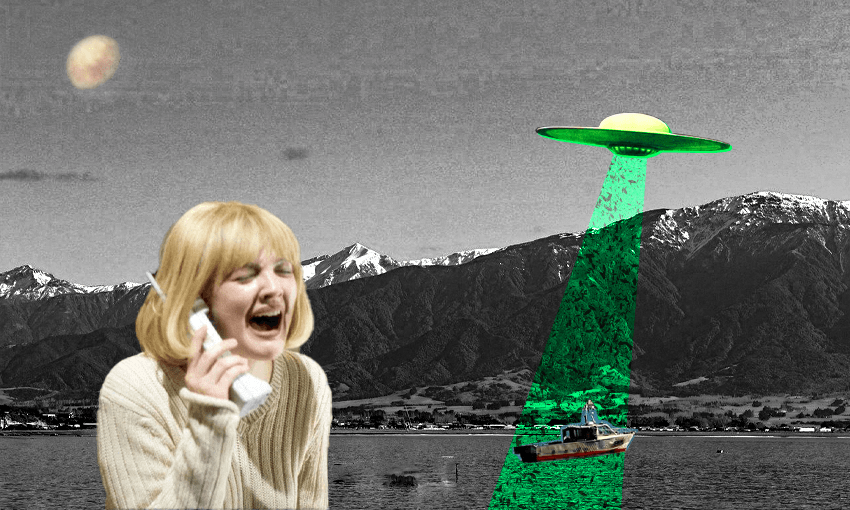On Monday, despite case numbers soaring, all Covid-19 restrictions in England will be lifted. Siouxsie Wiles explains why for many, ‘Freedom Day’ will be anything but.
Monday, July 19. That’s the day that prime minister Boris Johnson and his government say they will enact “Step 4” of their plan to return England to “normal”. By normal they mean ending all legal, social and economic Covid-19 restrictions. You know, as though the pandemic wasn’t still actually raging. If all goes according to plan, come Monday there will be no restrictions on gathering sizes, people will be expected back at work, and pubs, restaurants and night clubs will be operating as though SARS-CoV-2 wasn’t a disabling and deadly airborne virus.
It doesn’t seem to matter that the previous steps of the plan, along with the emergence of the delta variant, have left the UK experiencing its third wave of Covid-19 infections. As of July 12, the number of daily new confirmed cases was over 32,000. It’s up from 19,000 just two weeks ago. The government itself predicts they could get up to 100,000 cases a day. That’ll be nearly twice as many as they had at the peak of their second wave in January.
The logic (if you can call it that) behind getting back to normal on Monday, at least according to Boris Johnson, is that it is better to remove restrictions during the summer months when people are spending more time outdoors, than in winter. With just over half the population fully vaccinated, and most of those being the elderly and people with underlying health conditions who are most at risk of dying from Covid-19, Johnson is hoping that by letting the virus loose on the unvaccinated young, the UK will achieve herd immunity by winter. That means millions of people are going to be infected. Many people will die. And many, many more will be left with chronic health problems and disability that will have personal and economic impacts for decades. The WHO’s Dr Mike Ryan described the plan as “moral emptiness and epidemiological stupidity”.
Because the irony is, there’s no guarantee that Boris’s gamble will pay off. In fact, it’s highly unlikely the UK will achieve herd immunity by winter following this strategy. And we know very well why. Because uncontrolled transmission provides the perfect conditions for the virus to continue mutating. The delta variant is now dominant in the UK. The reality is, we don’t know how much worse delta could get. But with 100,000 new cases a day, it probably won’t take us too long to find out. The worst-case scenario is that delta evolves to become even more infectious and to get around any protection people have from being vaccinated or infected. Those are very real possibilities. And they put everyone at risk.
Do you know what the UK could do instead? Continue vaccinating people. Do everything in their power to limit human-to-human transmission of the virus. That means keeping restrictions on indoor activities and gathering sizes. That means making masks mandatory, especially indoors. That means focusing on ventilation to make workplaces, schools and public transport safer. That means using the test-trace-isolate strategy to get people into isolation when they’ve been exposed and paying them to stay there. Instead, the government has reduced the number of people their app notifies when they’ve been exposed to the virus.
Boris Johnson and his government are embarking on a dangerous and unethical experiment all while spouting the narrative that it’s time people started taking personal responsibility for their health. From Monday, if people get infected, it’ll be their fault for not being cautious or vigilant enough. It’s a narrative that is grossly offensive given it will disproportionately impact those whose jobs and income put them in harm’s way versus those privileged enough to be cautious.
To be fair, the morally empty and epidemiologically stupid pandemic strategy isn’t limited to Boris Johnson and his government. The Netherlands recently lifted their restrictions and have seen an 800% increase in cases in a week. But for me, what Boris Johnson is doing is personal. People are calling Monday July 19 Freedom Day. But it means the exact opposite for millions of people. And my mum is one of them. She’s had her two doses of the Oxford-AstraZeneca vaccine so in theory she should be able to get back to “normal” on Monday. But she has a form of blood cancer that means she’s unlikely to have mounted a good immune response to the virus. Taking personal responsibility for her health means she and my dad need to keep isolating, just like they’ve been doing for nearly a year and a half. They’re retired so they can stay isolated. I think that’s the only reason I’ve been able to function during this pandemic. Knowing that they are safe. That they can get their groceries delivered. But I do worry how they will stay mentally well being confined for so long, especially with no end in sight at the moment. And I try not to think about how long it might be before we see them again.



